Climates during the spread of the Neolithic
in Central and Western Mediterranean, 6000-5000 BC
CNRS
Università di Pisa
Materials and Methods
Radiocarbon data
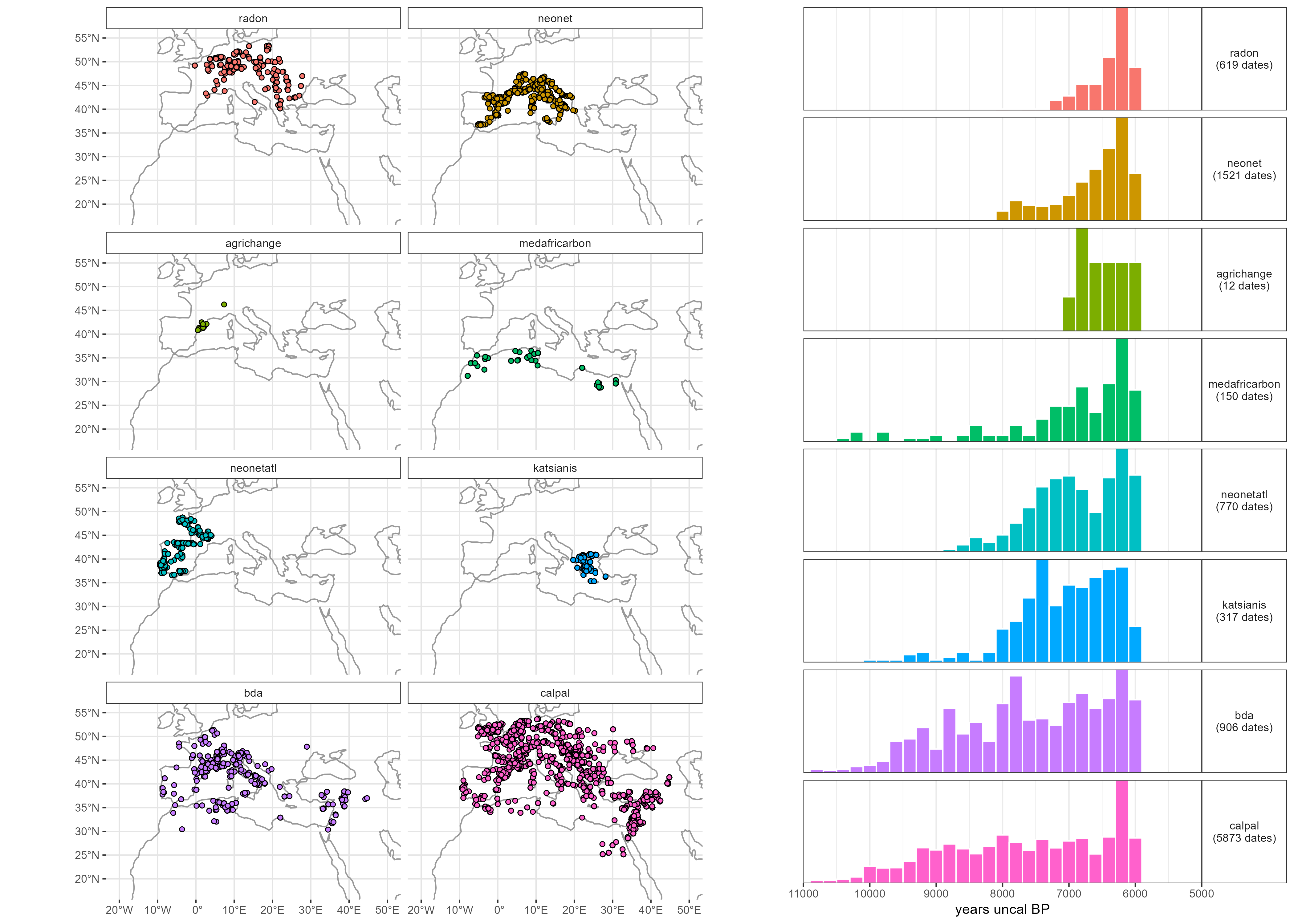
Early Mesolithic (EM)
Middle Mesolithic (MM)
Late Mesolithic (LM)
Early Neolithic (EN)
Middle Neolithic (MN)
Late Neolithic (LN)

Most ancient EN date weighted medians (w-medians) by site.

Köppen climate classes
- Mean annual temperature (ºC)
- Annual precipitation (mm year -1)
- Biome (pollen-based)
Beyer et al. 20201
…
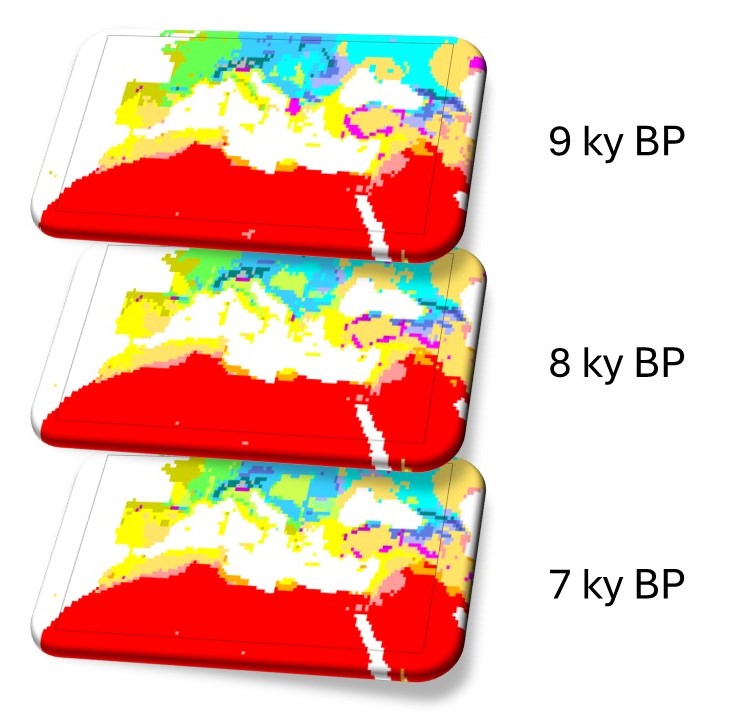
…
Background studies

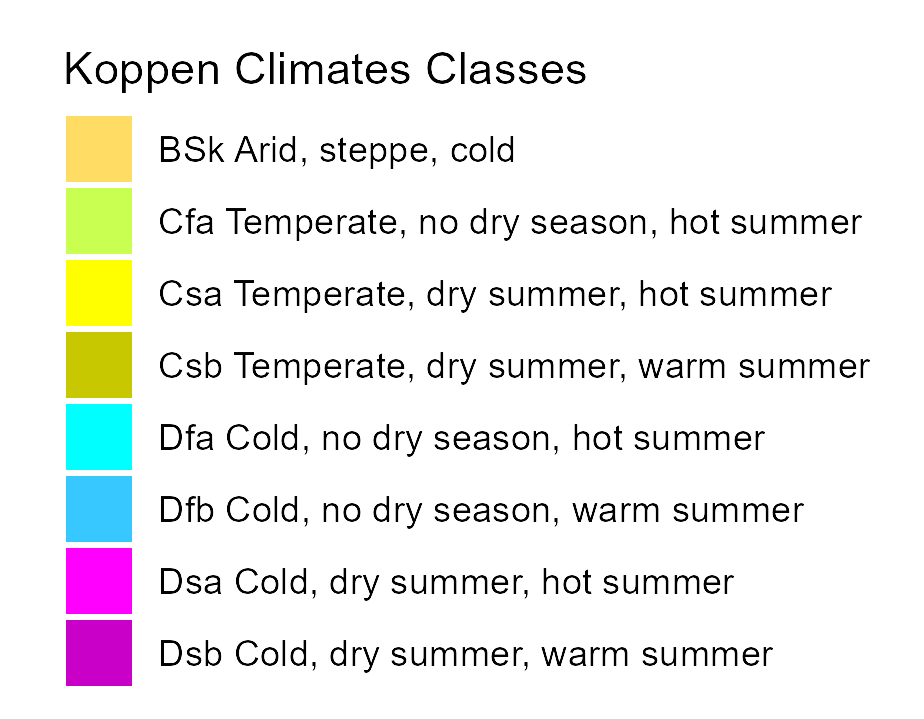


- Rapid expansion in the Southern Balkans (Csa and BSk).
- Northern Balkans expansion required adapting agriculture and stockbreeding systems to colder climates (Dfa, Dfb)
- Slowdown of Neolithic expansion. Early northern occupations, such as Porodin (idf 26).
- Confirms: Krauß et al. 20182, Ivanova et al. 20183.
Spread of Neolithic in the Central Western Mediterranean
6100-6000 BC
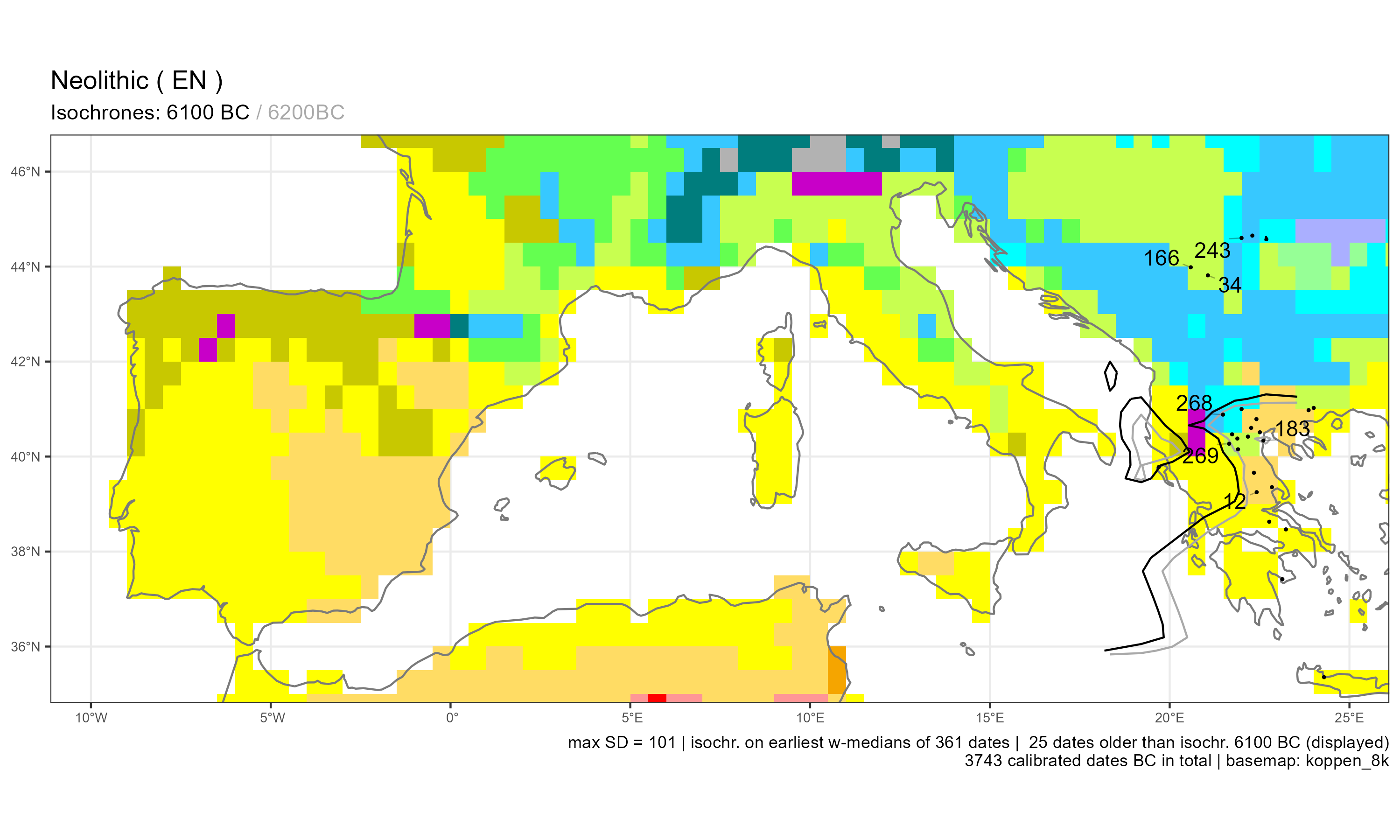

- Lorem Ipsum Csa (Temperate, dry summer, hot summer) and BSk (Temperate, dry summer, warm summer) climates.
- Early settlement: Lorem Ipsum (idf Lorem Ipsum).
5800 BC
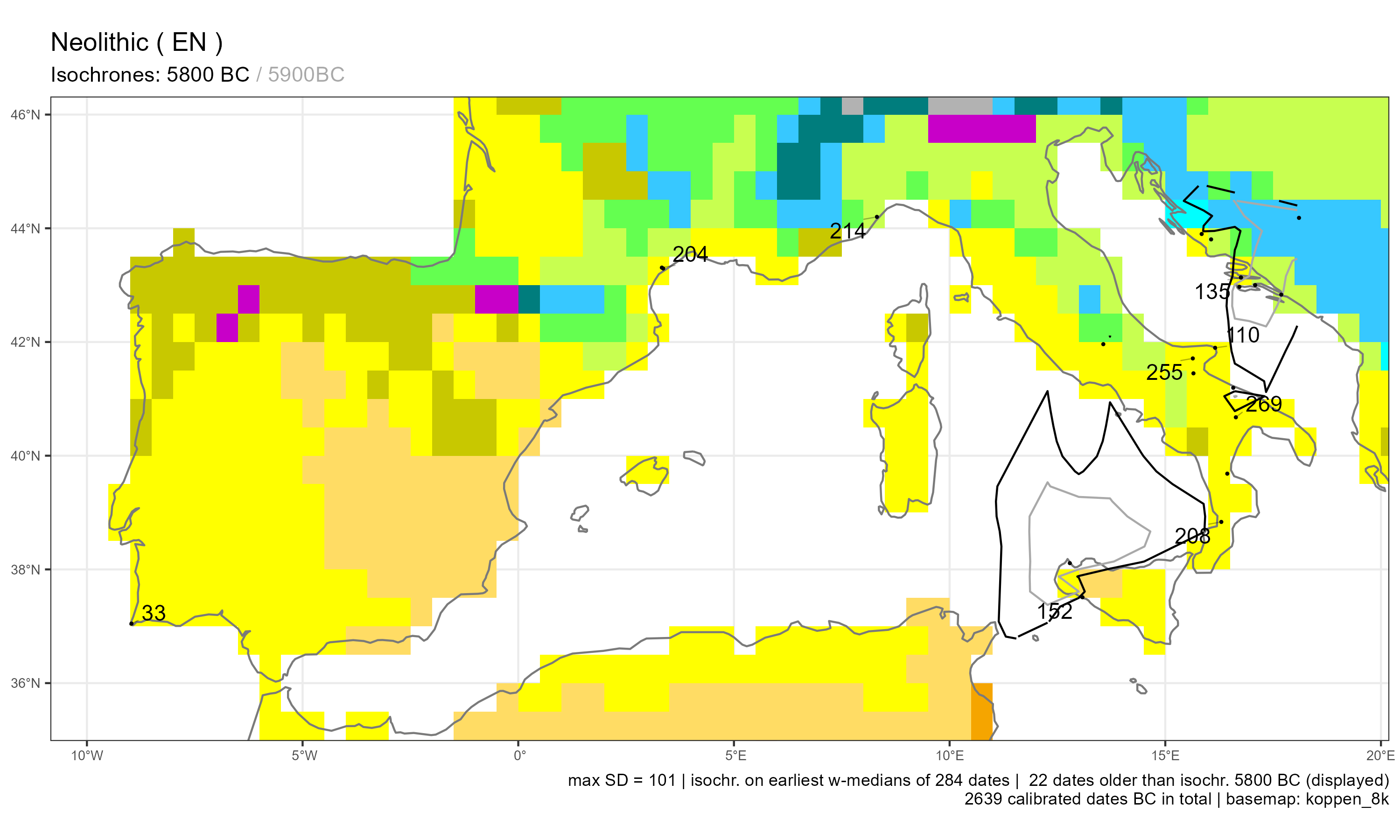

- From 5900 BC the isochrone is drawn in the Adriatic between Dalmatia and southern Italy
- A large majority of sites are in Csa (Temperate, dry summer, hot summer) climates.
- Leapfrog neolithisation: Pollera (idf 214), Peiro Signado (idf 206).
5600 BC
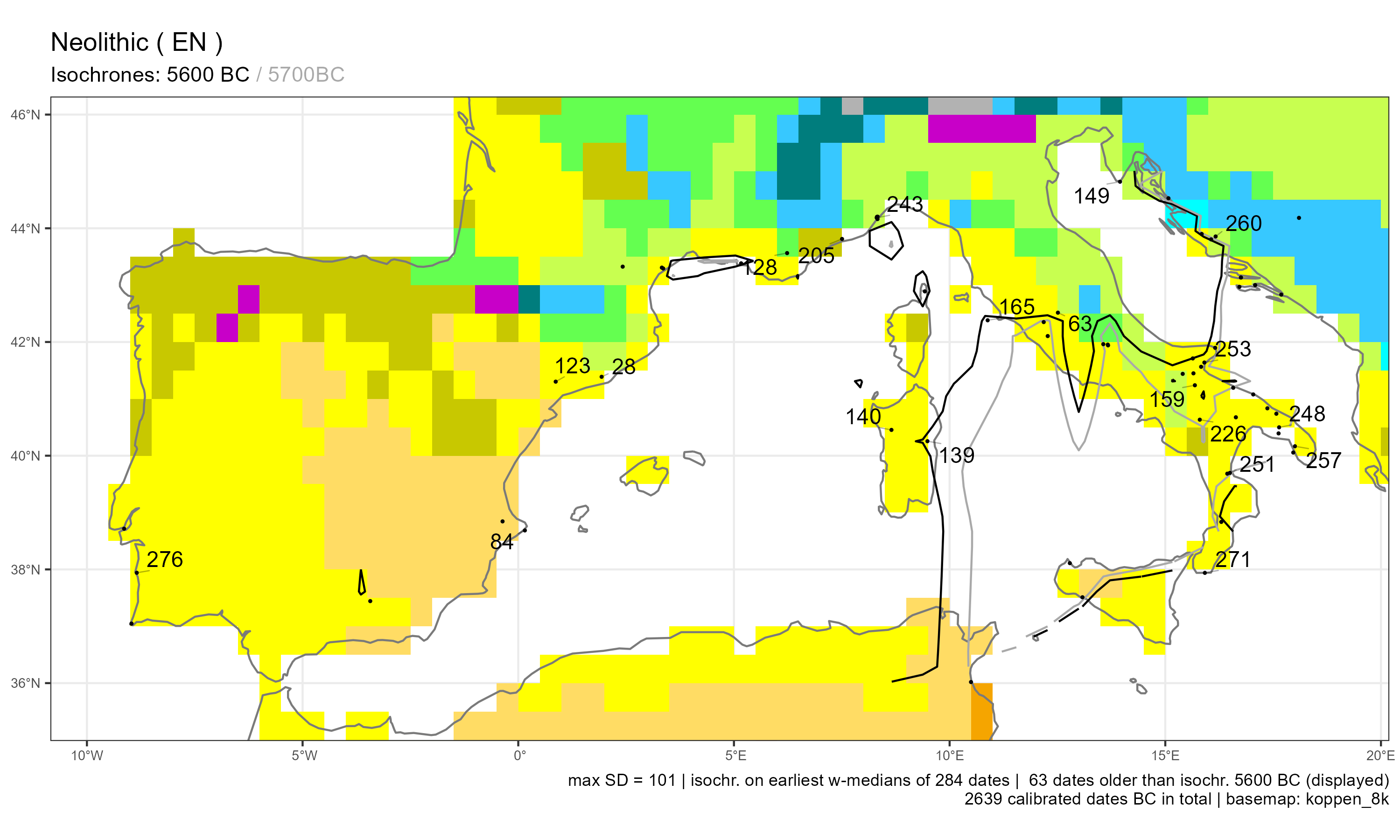

- Lot of missing climate data due to the map resolution (= coastal sites).
- Despite a large majority Csa (Temperate, dry summer, hot summer) climates, new occurrences of Cfa (Temperate, no dry season, hot summer) sites.
- Densification of sites in Southern Italy = painting and art (// Balkans)
- The establishment on the island of Giglio Le Secche[obs] is to be linked to Pont-de-Roque-Haute[obs].
- Cardial Basi-Filiestru-Pienza (BFP)
- Leapfrog neolithisation is obvious: Bonica (idf 28), Cova de les Cendres (idf 206), Vale Pincel I (idf 276), etc.
5400 BC
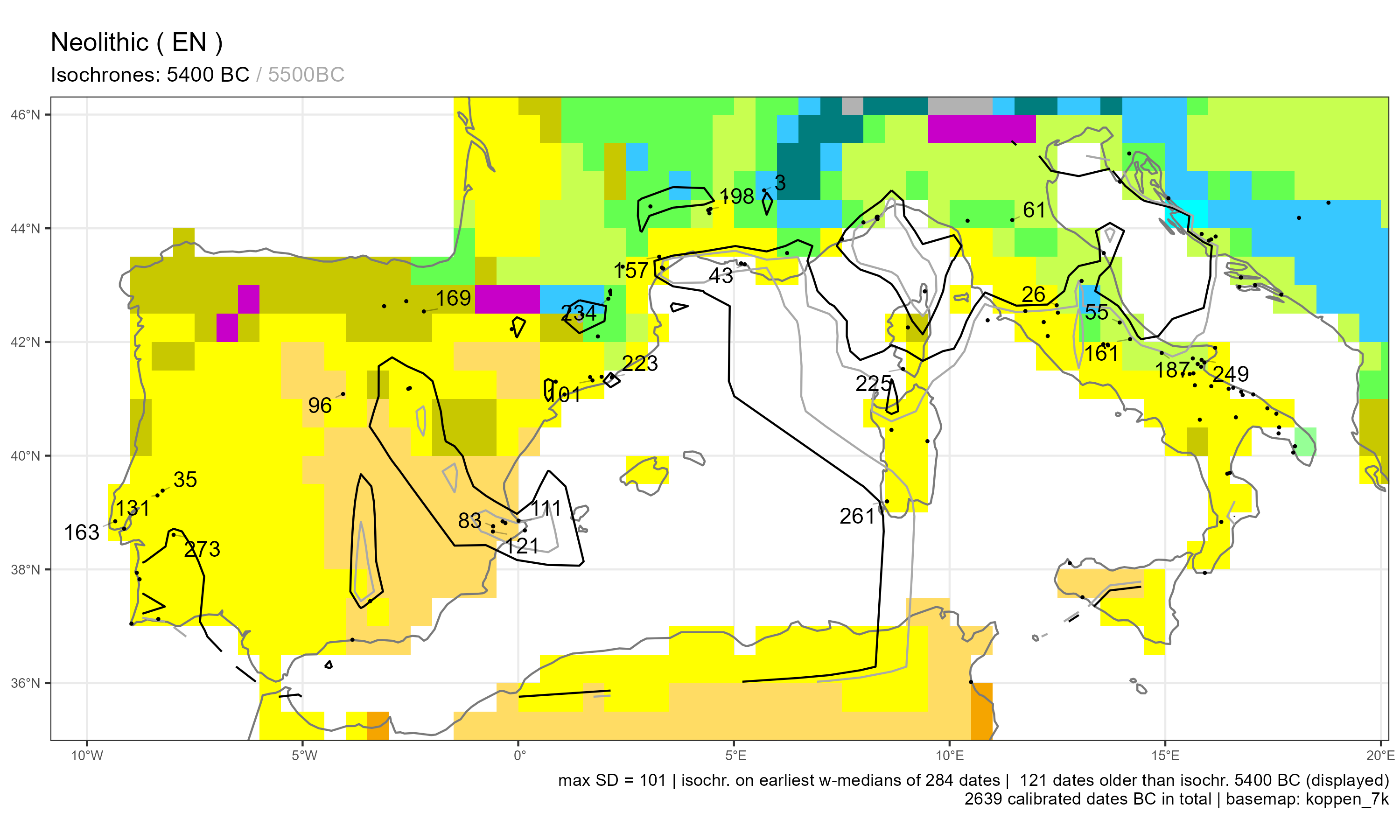

- The Corsican-Sardinian area connects with a strengthening of sites in the South of France (Sardinian-Languedoc area).
- Distribution of the WIT impressa in Southern Italy, Adriatic, Southern France, Mediterranean Spain
5200 BC


- For the first time in Italy, all new Neolithic sites are in temperate climate classes (Cfa, Cfb) and none in Csa climates. This shows a complete adaptation of the agro-pastoral economy to the more temperate climates of central Adriatic and northern Italy.
5000 BC
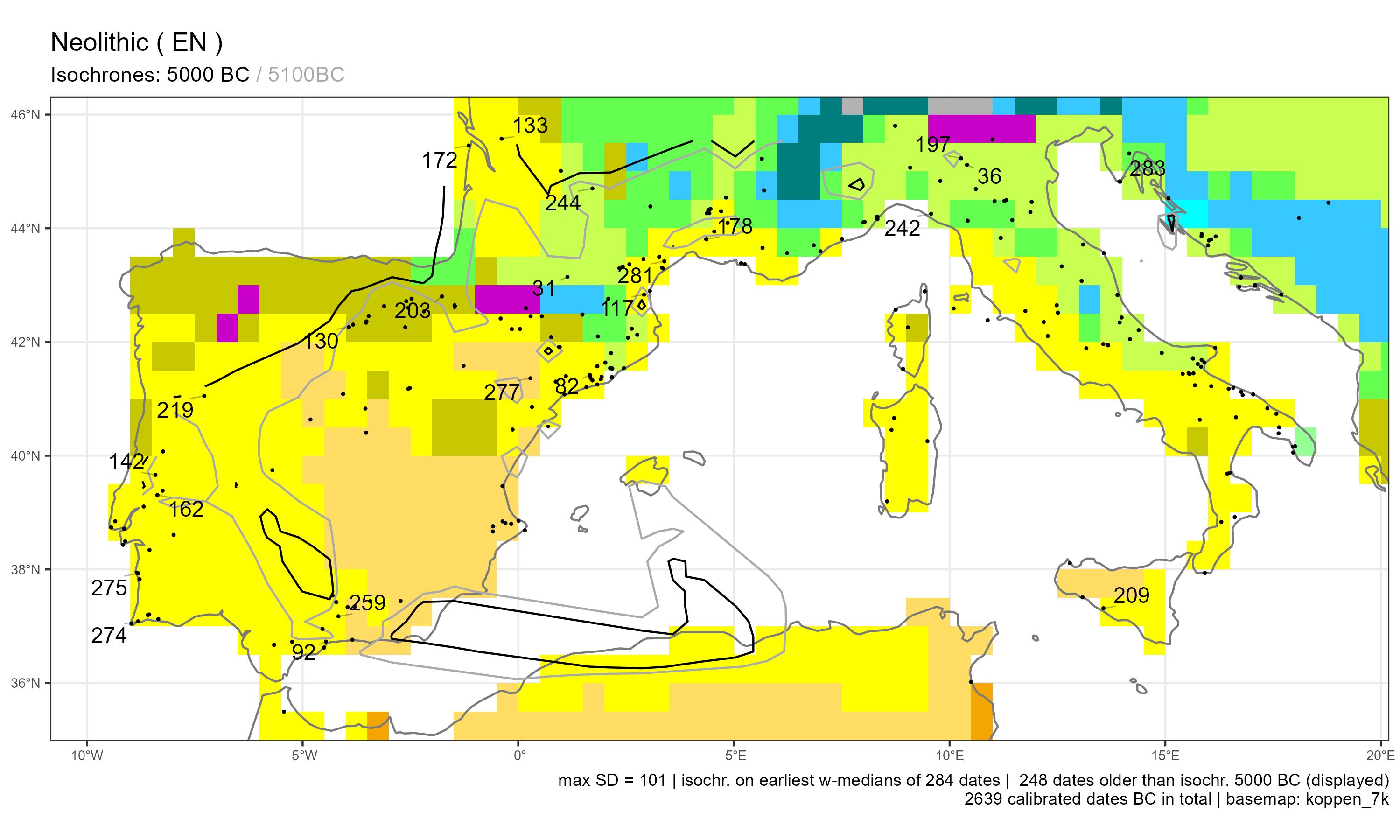

- In France, the isochrone now crosses the height of the Puy Mary volcano (Dfb). In France, the isochrone separates the Mediterranean biogeographic zone (neolithized) from the continental biogeographic area to the north.
Synthesis
Climate changes and EN occupations
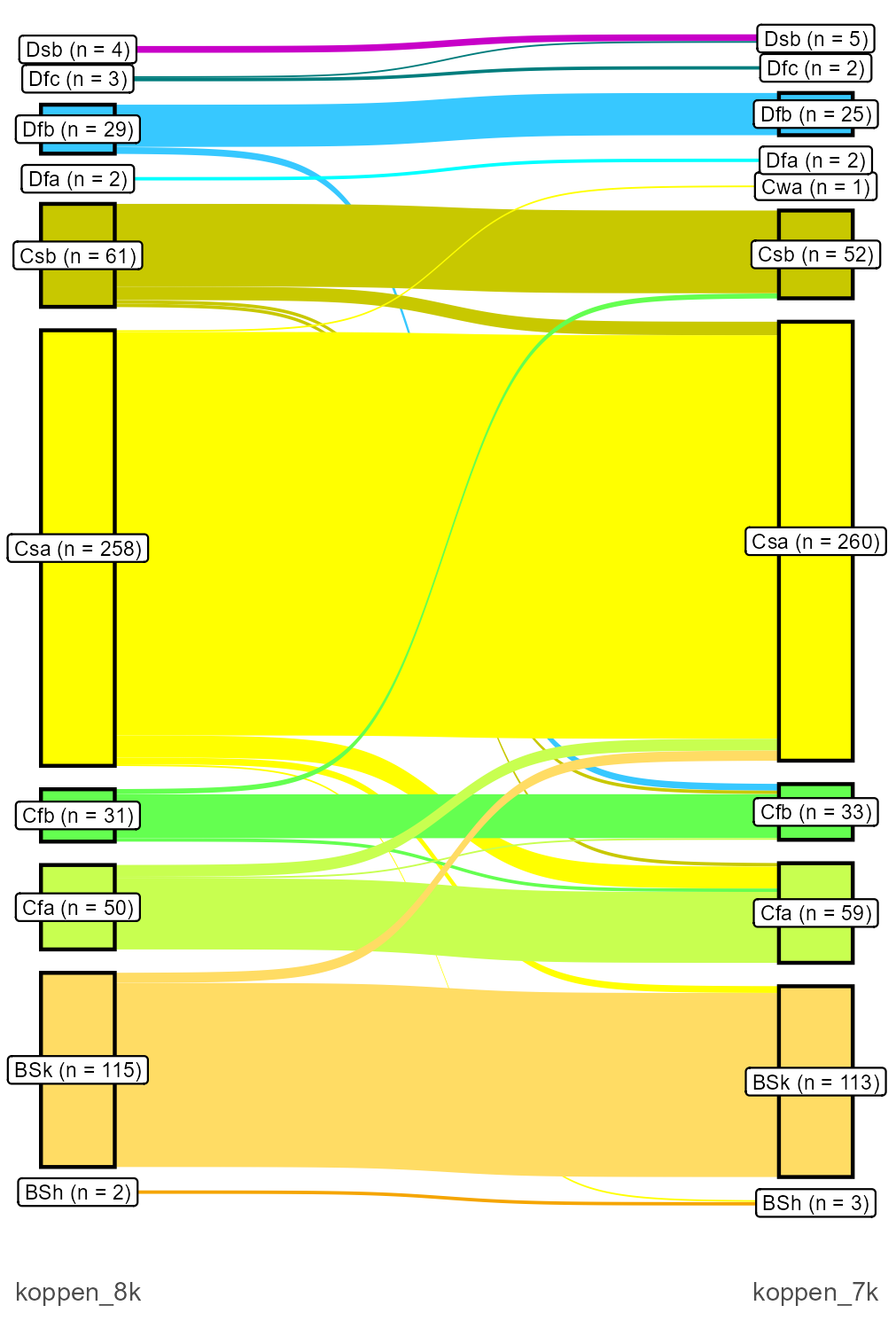
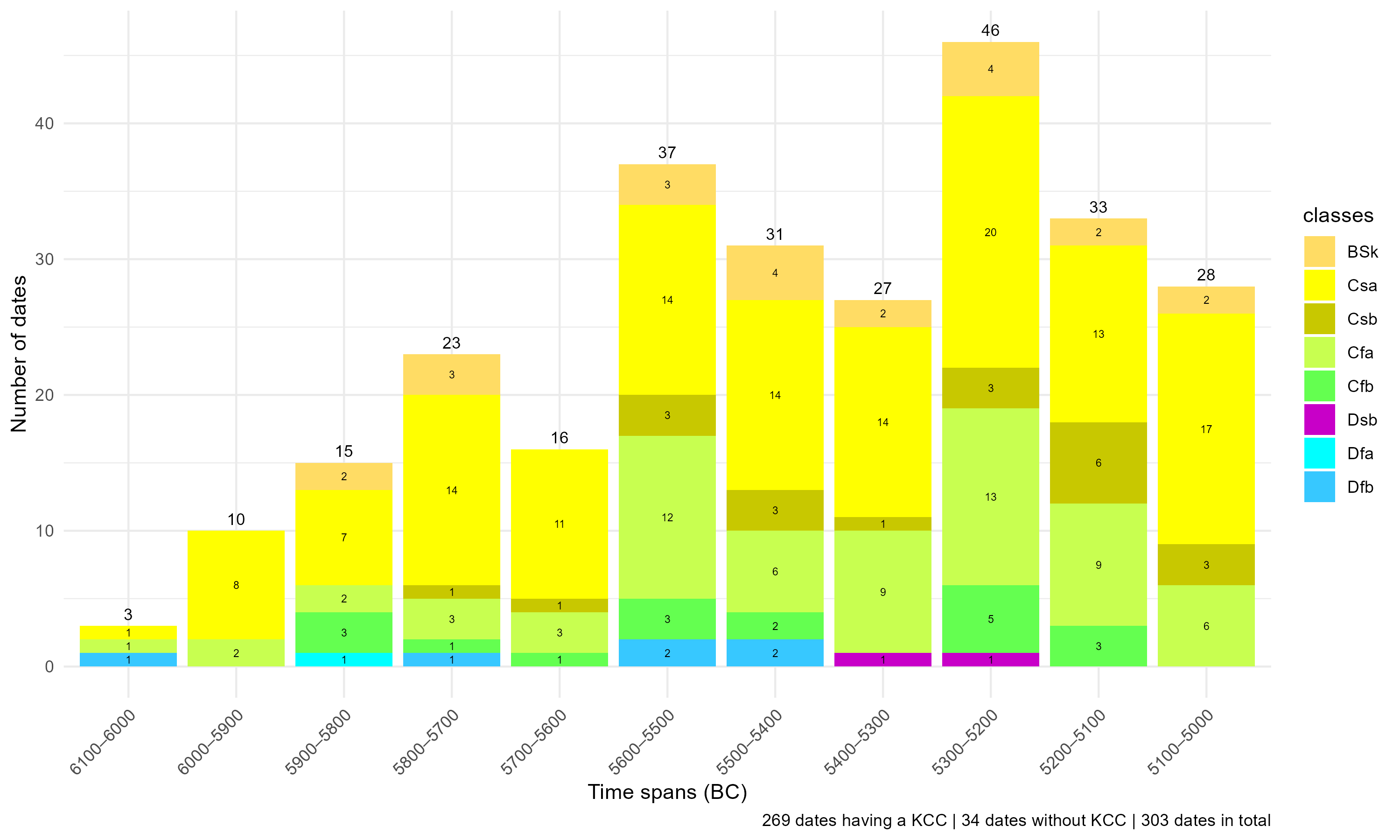
Thank you
Footnotes
Beyer, R. M., Krapp, M., & Manica, A. (2020). High-resolution terrestrial climate, bioclimate and vegetation for the last 120,000 years. Scientific data, 7(1), 236.
Krauß, R., Marinova, E., De Brue, H., & Weninger, B. (2018). The rapid spread of early farming from the Aegean into the Balkans via the Sub-Mediterranean-Aegean Vegetation Zone. Quaternary International, 496, 24-41. https://doi.org/10.1016/j.quaint.2017.01.019
Ivanova, M., De Cupere, B., Ethier, J., & Marinova, E. (2018). Pioneer farming in southeast Europe during the early sixth millennium BC: Climate-related adaptations in the exploitation of plants and animals. PLoS One, 13(5), e0197225. https://doi.org/10.1371/journal.pone.0197225
Huet & Mazzucco -  - May 22-25, 2025, University of Zadar, Croatia
- May 22-25, 2025, University of Zadar, Croatia



